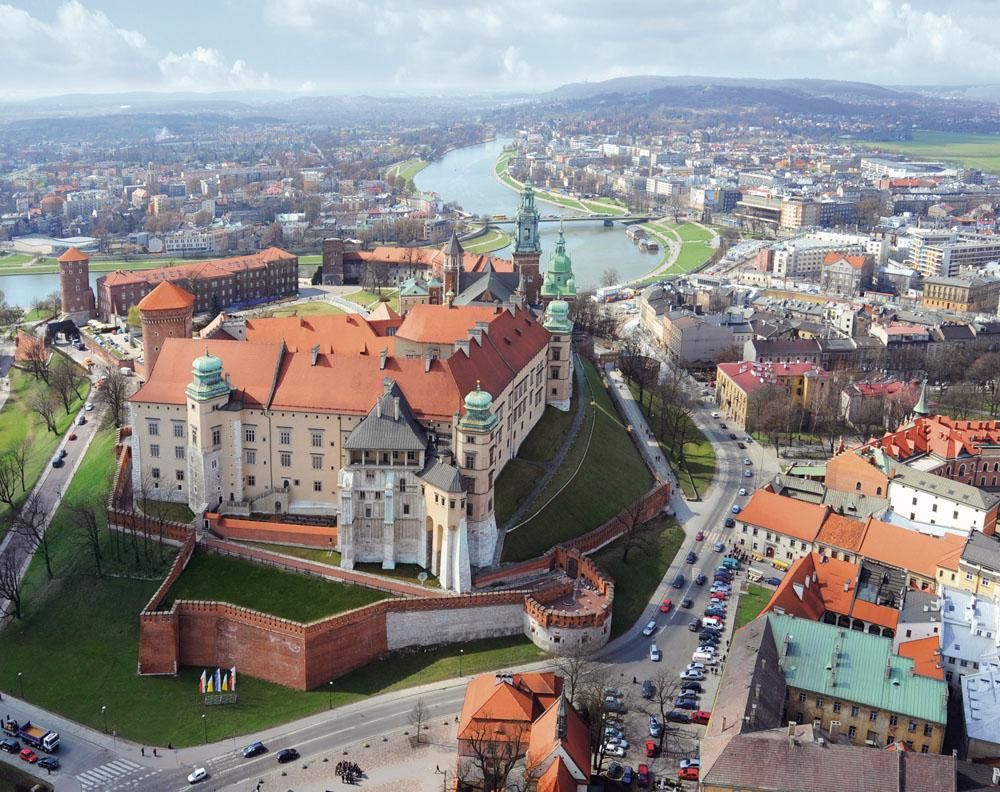From the dawn of Polish history Wawel Hill in Cracow was a centre of secular and ecclesiastical power. The establishment in 1000 of the bishopric of Cracow was soon followed by the construction on Wawel of the first cathedral. The Wawel castle functioned as the residence of the Polish rulers from the mid-11th to the early 17th century.
The present structure incorporates Romanesque fragments and considerable Gothic parts, but it acquired its present form mainly in the period c. 1504-1535, during the reign of the kings Alexander (1501-1506) and Sigismund I the Old (1506-1548) of the Jagiellonian dynasty. The construction of the Renaissance castle was begun by Master Eberhard Rosemberger – responsible for the actual building – and Francesco the Florentine, who executed decorative stone elements and the arcaded galleries.
Their work was continued by Master Benedykt and another Florentine, Bartolomeo Berrecci. Those artists created together one of the most stately monuments of Renaissance architecture in Europe.
The rooms of the Renaissance Wawel residence had a truly royal decoration, presenting a uniform symbolic programme whose leading idea was the glory and righteousness of the sovereign of Poland – arousing fear in his enemies but benign to his subjects, wise and pious. Some elements of the decoration have survived, these being painted friezes, wooden ceilings, and carved architraves. The most original of them is a fragment of the decoration of the ceiling of the Audience Hall, in the form of sculptured and polychromed heads.
A collection of the Flemish tapestries that once belonged to King Sigismund Augustus (1548-1572) is historically connected with the Wawel rooms. The history of the tapestries abounded in dramatic events. Towards the end of the 18th century, during the third partition of Poland, they were carried away to Russia, from where they returned as late as the 1920s. In the first days of the Second World War they were evacuated to Romania and next through France and England to Canada. They came back to Wawel in 1961, to be hung in the royal chambers again.
At the turn of the 16th century some of the castle rooms were refashioned in the early Baroque>
Following the third partition of Poland in 1795, the former royal castle was converted into Austrian army barracks for the greater part of the 19th century. The army did not leave Wawel until 1905; it was then possible to start conservation work aimed at restoring to the monument its historical qualities. The year 1930 saw the formal establishment of the Wawel museum as a department of the State Art Collections. At the same time the castle functioned as an official residence of the president of Poland.
During the Second World War Wawel was the seat of the occupation authorities of the Government General and residence of Hans Frank. Almost immediately after the liberation of the country the museum was revived, acquiring a form similar to the present one in the 1960s. The year 1992 marked the commencement of large-scale repairs and conservation work in the Royal Castle and the nearby Cathedral, which are to prepare Wawel for the celebrations of the millennium of the Bishopric of Cracow in 2000.
Today the Wawel Royal Castle is a museum – a historical residence in character – additionally including some specialized exhibitions as well as two departments located outside Cracow. The Renaissance castle of Pieskowa Skała houses an exhibition of European art of the 15th to 19th centuries. The 17th century manor house at Stryszów, situated in a beautiful submontane landscape, is an example of a modest Polish country residence. The permanent exhibition in it features a 19th century furnished interior. In addition, temporary displays are mounted here.


























